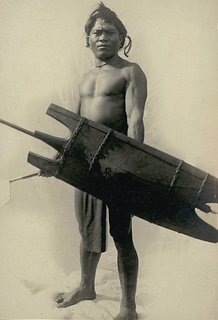TAMARAW: Dwarf Bufallo in the Philippines fights for survival

Dwarf Bufallo Fights for Survival
MOUNT MAGAWANG, Mindoro Island
Emerging to graze only at dawn and dusk, the dwarf water buffalo, the largest indigenous mammal in the Philippines, is living on borrowed time.
First documented in 1888, the tamaraw stands about three feet (one metre) high at the shoulder and weighs 300 kilograms (660 pounds).
It lives for about 25 years and has a ferocious streak -- it has been known to attack people with its V-shaped horns.
By the 1960s only about 300 had been counted in the wild making it rarer than the black rhinoceros of Africa, China's panda and the tiger.
Tamaraw exist mostly within a 16,000-hectare (39,520-acre) section of a 97,000-hectare (240,000-acre) national park around Mount Iglit on the central island of Mindoro.
"Since there are less than 500 of them, by definition they are still on the critically endangered list," said Rodel Boyles, head of the government's Tamaraw Conservation Programme.
The World Conservation Union cites habitat loss from cattle ranching and farming, hunting and diseases as major threats to the animal's survival. A century ago about 10,000 were thought to be roaming the entire island.
The conservation programme is run on a shoestring annual budget of 3.69 million pesos (77,620 dollars), barely even enough to fund and outfit Boyles' staff of 30, including a handful of anti-poacher patrols.
The park also shelters deer, wild hogs and other rare birds endemic to Mindoro, including the imperial pigeon, scops owl, black-hooded coucal, scarlet-collared flowerpecker and bleeding-heart pigeon, as well as the rare Jade vine.
Source: France24
Labels: Bufallo, Mindoro Island, Phlippines, Survival, Tamaraw





 Deviant Art
Deviant Art
0 Comments:
Post a Comment
<< Home